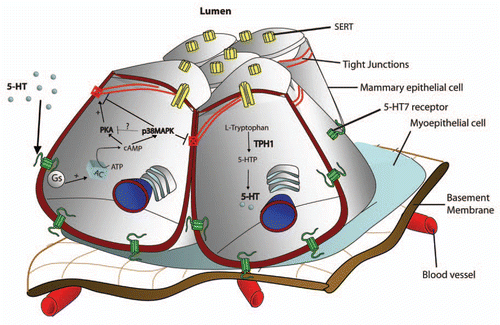Figures & data
Table 1 Serotonin receptor expression in ductal organs
